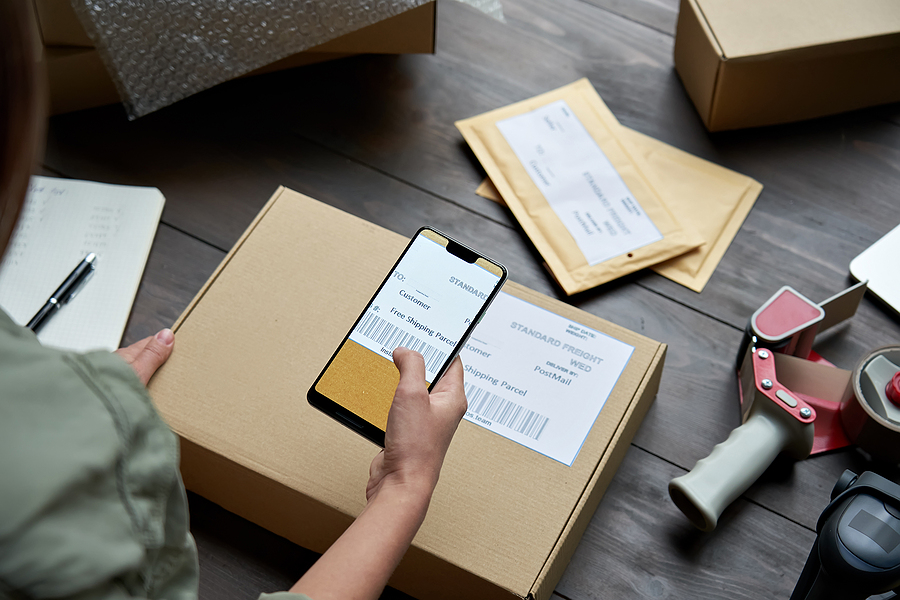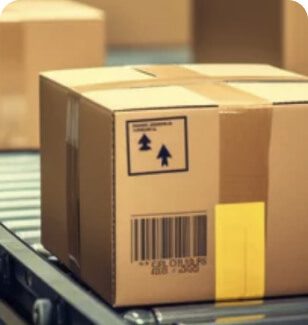Speed, Accuracy Lead the Pack in These 30 Order Fulfillment Statistics for 2024

Ecommerce is here to stay. To continue to be successful and relevant today requires you to determine what role it will play in your company’s business model.
Ecommerce powerhouses like Amazon and Walmart have been the driving force behind the change in how consumers shop, how orders are processed and delivered, and the rising expectations consumers have when shopping online. These changes have created a feedback loop that encourages other businesses to follow the lead of Amazon and Walmart to meet the expectations of their customers.
In this article we will explore 30 order fulfillment and ecommerce statistics that show the need for businesses to quickly and accurately be able to process orders in today’s demanding global economy. We will also go over a few order fulfillment best practices your company should be following. Read on to learn more.
Ecommerce Statistics
These statistics showcase the immense growth ecommerce continues to experience and the need for businesses to be able to have great communication and visibility so their supply chain can perform to its maximum capability.
- US ecommerce sales are expected to cross the $1 trillion threshold in 2024.
- Global ecommerce sales are expected to more than double prepandemic levels by 2025 to $7.4 trillion.
- In 2021, global ecommerce sales were expected to grow by 14.5%.
- Social commerce sales will reach $45.74 billion in 2024.
- 78% of retailers increased their ecommerce budget for 2024.
- 18% of all retail sales were conducted online, a number expected to reach 22% by 2024.
- Global B2C ecommerce sales were estimated to reach $4 trillion in 2025 and are expected to reach $5 trillion by 2024.
- Global B2B ecommerce sales were expected to climb from $7.7 trillion in 2018 to $17.6 trillion in 2024.
- 57% of shoppers have made an international purchase online within the past six months, 45.5% of which come from North America.
- Millennials aged 25 to 34 accounted for 20.2% of digital buyers In the US in 2024.
- United States’ share of global retail ecommerce sales is expected to drop to 16.9% by 2024 from 22.2% in 2015.
- 44% of all ecommerce sales are expected to be completed through mobile devices by 2025.
- The world witnessed 10 years of ecommerce growth in 90 days during the first quarter of 2020, according to some estimates.
- 65% of consumers prefer to buy products and services from their native country when shopping online.
- 69% of books, music and videos are purchased online.
Amazon and Walmart Statistics
Amazon and Walmart are at the forefront of industry leading change. These statistics highlight their performance and what consumers have grown to expect from online retailers
- Amazon processed over 66,000 packages an hour, or roughly 1.6 million orders per day in 2023.
- Estimates suggest Amazon accounted for nearly 41% of all retail sales in the US in 2023.
- Amazon Prime members spend four times more than non-Prime members with an average total of $1,968 per year.
- More than 200 million people were subscribed to Amazon Prime worldwide as of January 2023, analysts expect subscriber totals to increase to 275 million over the next decade.
- Amazon’s shipping costs rose from $37.9 billion in 2019 to $61.1 billion in 2023.
- Online sales grew by 79% for Walmart in 2021, resulting in the company announcing it will invest $14 billion in supply chain automation.
Shipping Statistics
Shipping is an extremely important element to ecommerce. These statistics show why you need to have a good, transparent shipping policy, the ability to provide shipping insurance and shipping software to keep your order fulfillment operations on schedule.
- 165 billion packages are shipped In the United States each year.
- The average cost to fulfill an order is 70% of the average order value for online retailers.
- Excessive shipping fees are the reason 63% of consumers have canceled an online purchase.
- If a delivery is estimated to take longer than a week, 38% of shoppers will abandon their order.
- If a purchase does not arrive within two days of promised delivery date, 69% of shoppers will likely not shop with that retailer again.
- If no delivery date is provided, 24% of shoppers will abandon their purchase.
- Unexpected shipping costs being added just before checkout account for 25% of online shoppers abandoning their order.
- During shipping, a package can be manually handled 20 times or more, accounting for an average of 17 times an ecommerce delivery may be dropped or mishandled in a single shipment.
- Free shipping is the most important factor to 74% of shoppers, 94% of consumers have taken action to receive free shipping.
Order Fulfillment Best Practices
Now that we have gone over key statistics relating to ecommerce, order fulfillment and shipping, let’s gloss over some best practices you can implement to improve your supply chain’s effectiveness.
Critical questions you may ask yourself in how you will maintain an order fulfillment process that is accurate and efficient include:
- How can I ensure all orders are delivered within the expected timeframe?
- What needs to be done to make my online business and warehouse operate at peak efficiency?
- Does my supply chain have any gaps or areas in which it is lacking?
- Have I taken the time to research different fulfillment companies yet?
➡️ Increase Data Visibility: Real-time updates and visibility into your operational efficiency will help you identify areas that can be improved and mitigate problems before they arise. Software that tracks patterns, enables you to create custom monitoring dashboards and share reports both internally and with vendors will help achieve this.
➡️ Implement Automation to Key Processes: Implementing automation wherever possible streamlines the order fulfillment process, avoids human error and enables your business to enjoy sustainable growth.
➡️ Organize Warehouse Operations:To ensure that your order fulfillment process is working to the best of its ability, you need to organize your warehouse operations. Order consolidation using a warehouse management system optimizes order picking, based on date of order, expiration dates and same destination.
➡️ Unify Data Systems: When all of your data is unified under one system, the chance for error drastically decreases and your company’s order fulfillment capability and efficiency increases. Real-time data enables you to avoid errors when storing, packing and shipping merchandise, while having the ability to hold vendors accountable for supplying the correct number of items you’ve requested.
➡️ Create a Hassle-free Returns Process: Returns are an inevitable part of the ecommerce process. Expect that returns are going to happen and create a hassle-free, user friendly and transparent returns policy. Ecommerce software can help manage the entire returns process which will improve warehouse workflow and customer satisfaction.
➡️ ReadyShipper X: is the cloud ecommerce software solution that enables your business to manage and fulfill your online orders accurately, quickly and efficiently. If you’re ready to find out what ReadyCloud can do for your business contact us today to schedule a free consultation by one of our dedicated specialists.
What You Should Do Now
Here are 3 ways ReadyShipper X can help you instantly cut shipping costs, keep delivery promises, and scale fulfillment without adding headcount:
Schedule a Demo – See how ReadyShipper X combines on-premise speed with cloud flexibility to ship your orders faster and cheaper, delivering the speed customers expect at costs that protect your margins.
Start Your Free Trial of ReadyShipper X (No CC Required) – Get up and running in minutes with instant access to multi-carrier rate shopping, smart automation, and enterprise features.
Try ReadyCloud at No Cost – Why manage shipping and returns separately? Get ReadyShipper X, ReadyReturns, and more in one unified platform for faster fulfillment, fewer headaches, and happier customers.
Share On:








